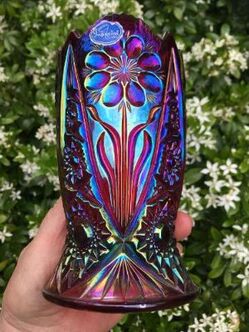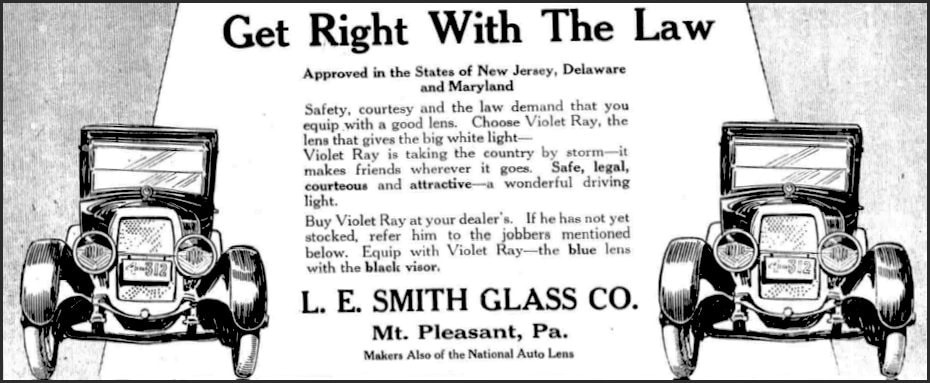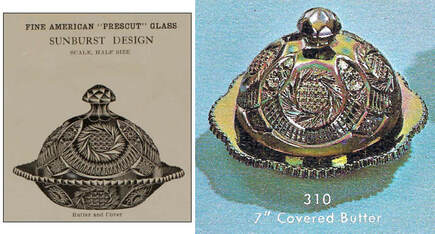NetworK ezine Issue 49. June 2019
Totally Devoted to Carnival Glass
It’s our fourth birthday – celebrations all round.
Amazingly, it’s now four years since we launched our free monthly Carnival Glass ezine, Network - and we have gone from strength to strength.
Our NetworK distribution list is worldwide, and the number of subscribers has risen tremendously, with new members being added each and every issue. Speaking of NetworK issues, there have been 49 regular monthly issues, plus 9 "specials"! That is a huge amount of information and pictures ... all about Carnival Glass.
What makes it so special is that it’s all thanks to you for your constant support, kind comments and brilliant contributions ... and your willingness to share your Carnival pictures, information and stories with all of us. Truly a "NetworK" of like-minded friends around the world.
In this extensive birthday issue, we have more top notch information from many wonderful readers. So, sit back and enjoy the fun – maybe grab a piece of cake too, and celebrate with us.
Amazingly, it’s now four years since we launched our free monthly Carnival Glass ezine, Network - and we have gone from strength to strength.
Our NetworK distribution list is worldwide, and the number of subscribers has risen tremendously, with new members being added each and every issue. Speaking of NetworK issues, there have been 49 regular monthly issues, plus 9 "specials"! That is a huge amount of information and pictures ... all about Carnival Glass.
What makes it so special is that it’s all thanks to you for your constant support, kind comments and brilliant contributions ... and your willingness to share your Carnival pictures, information and stories with all of us. Truly a "NetworK" of like-minded friends around the world.
In this extensive birthday issue, we have more top notch information from many wonderful readers. So, sit back and enjoy the fun – maybe grab a piece of cake too, and celebrate with us.
The Pattern of Many Names and Numbers: Four Seventy Four - “La Rochelle”.
|
“All buyers who have called to see this line have placed nice orders and predicted it the selling pattern for this Fall” Crockery & Glass Journal, 1910. So, did you know that the familiar Imperial pattern that Carnival Glass collectors call Four Seventy Four (#474) was originally launched with its own delightful name? Back in 1910, when it was first presented to the glass trade in clear glass (crystal), Imperial launched it with a fanfare as “La Rochelle”. It was very popular, and enjoyed a lot of praise in the glass journals of the time. “It is surely a winner.” The 1910 Crockery & Glass Journal (above) sang the praises of the new “La Rochelle” design, even showing a delightful illustration of the clear glass vase.
Curiously, the enchanting name didn’t persist in Imperial’s catalogues, reverting to the simple pattern number 474 a few years later, and then (in 1915) appearing as a “daisy design” produced in Carnival Glass. Imperial’s Four Seventy Four was reissued in Contemporary colours and shapes – this vase (on the right) is a shape that Imperial didn't make in Classic Carnival. It was made in Sunset Ruby by Imperial in the late 1960s and early 1970s. Subsequently, Fenton bought many of Imperial's Four Seventy Four moulds, and this vase was one that they chose to reproduce, also in red Carnival. There are also some Four Seventy Four "look-alikes" - all is explained in our feature article, where we explain the full progression of this pattern using catalogue and other illustrations In this unmissable article we explain the Four Seventy Four pattern from its 1910 beginnings through to its Contemporary Carnival production by Imperial and by Fenton: Four Seventy Four - The Story Behind the Glass. |
A spectacular purple Four Seventy Four punch set (original
maker’s name “La Rochelle”). Courtesy Seeck Auctions. |
L. E. Smith
“Sometimes men would roast hotdogs over the heated glass.” Quote by L.E. Smith glass worker at Mount Pleasant, Don Sechrist, as shown in the Mount Pleasant Glass Museum.
Most of us are familiar with the Contemporary Carnival Glass production of the L. E. Smith Glass Company – and it often features in our Carnival NetworK Facebook Group. But did you know that the company was founded in 1907, and one of its earliest products was glass mustard pots?
“Sometimes men would roast hotdogs over the heated glass.” Quote by L.E. Smith glass worker at Mount Pleasant, Don Sechrist, as shown in the Mount Pleasant Glass Museum.
Most of us are familiar with the Contemporary Carnival Glass production of the L. E. Smith Glass Company – and it often features in our Carnival NetworK Facebook Group. But did you know that the company was founded in 1907, and one of its earliest products was glass mustard pots?
|
L.E. Smith didn’t make iridescent glass in their early days, coming to it in the early 1970s. As well as original new moulds for Collector Series plates, they also used several old McKee moulds to make some of their Contemporary Carnival.
Above: on the right is Smith’s #310 7" Covered Butter, often called Pinwheel and Hobstar. The original mould was from McKee’s Prescut series (c.1913) - the pattern was known as their Sunburst Design, as shown in the original McKee catalogue extract on the left.
|
Above: in green Carnival is Smith’s #727-G: 2½” pint pitcher known as Hobstar Variant. The original McKee pattern was called Valtec, which was part of their "Prescut" imitation cut glass series, as the McKee catalogue extract (left) shows.
|
Note that Smith's Contemporary version of the pitcher has an ice lip, shaped by hand after the pitcher was taken out of the mould.
There is much more about L.E. Smith, including a picture gallery and catalogue images in our special feature: L. E. Smith's Contemporary Carnival Glass.
|
Update on Sheraton Thanks to Carl and Eunice Booker, who contacted us immediately after the release of the May NetworK, we can now add more information, as well as two more wonderful illustrations, of the U.S. Glass Sheraton pattern with iridescence. The Bookers have the tumbler and footed creamer in the Sheraton pattern, shown here on the right. The creamer is light marigold and has the U.S. Glass mark in the base. The tumbler is lightly iridised and has no mark – its base is thick and ground. Both pieces have interior panels. The full story is here: Sheraton by U S Glass Co. |
Macisa
This fascinating, marigold, kerosene lamp stands around 10 inches (26 cm) high. It came to the attention of Carnival collector and researcher, Claudio Deveikis, who has written about it here, on his excellent blog.
Claudio’s research revealed information about the lamp, its timeline, and some absolutely wonderful old ads showing this and other lamps. Here we show the Macisa lamp, and one of the fascinating ads from 1962. On Claudio’s blog, he shows more photos and ads, all of which are very interesting indeed. Our thanks to Claudio for allowing us to feature it all here.
This fascinating, marigold, kerosene lamp stands around 10 inches (26 cm) high. It came to the attention of Carnival collector and researcher, Claudio Deveikis, who has written about it here, on his excellent blog.
Claudio’s research revealed information about the lamp, its timeline, and some absolutely wonderful old ads showing this and other lamps. Here we show the Macisa lamp, and one of the fascinating ads from 1962. On Claudio’s blog, he shows more photos and ads, all of which are very interesting indeed. Our thanks to Claudio for allowing us to feature it all here.
Fenton’s Lily of the Valley
Some years ago, we were privileged to spend a week at the Fenton Art Glass factory, researching in the archives with the late Frank Fenton, and visiting the production floor with the late Howard Seufer.
One particular experience was especially memorable, and in fact stoked our interest in the crucial role played by moulds and mouldmakers. Howard arranged a brilliant practical demonstration for us to show the variety of shapes and sizes of glass that could be made from a single mould in the hands of an expert glassmaking team. The mould that was used for the demonstration was one that is familiar with many Fenton collectors (in both iridised and un-iridised colours) – the Lily (of the Valley) vase. It is a 3-part mould which looks like a footed, straight-sided large goblet shape.
Some years ago, we were privileged to spend a week at the Fenton Art Glass factory, researching in the archives with the late Frank Fenton, and visiting the production floor with the late Howard Seufer.
One particular experience was especially memorable, and in fact stoked our interest in the crucial role played by moulds and mouldmakers. Howard arranged a brilliant practical demonstration for us to show the variety of shapes and sizes of glass that could be made from a single mould in the hands of an expert glassmaking team. The mould that was used for the demonstration was one that is familiar with many Fenton collectors (in both iridised and un-iridised colours) – the Lily (of the Valley) vase. It is a 3-part mould which looks like a footed, straight-sided large goblet shape.
|
Above: the four pieces that were made from the glass for us. They are: a tall and slender, footed bud vase - a short, footed comport - and two slightly different footed plates (salvers or mini-cake plates).
Left: extract from Fenton’s 1999 catalogue – the items are sea green satin iridescent. The Lily (of the Valley) vase, #8540, is the Handkerchief shape, top left. The image is courtesy of the Fenton Family and Fenton Art Glass Company. |
In our fully illustrated article we also show the actual Lily of the Valley metal mould, and much more besides: Moulds: Lily of the Valley.
|
Carnival Glass from Europe e-book
"European Carnival Glass has finally been given the platform it has long deserved" Unbelievably, almost 800 Carnival Glass patterns were made by more than 50 different makers in Europe ... and they are all identified in our Carnival Glass from Europe e-book! Their amazing output was produced for export around the world, as well as for local consumption: European Carnival can - and has - turned up almost anywhere. Essential for anyone interested in Classic Carnival, our e-book is in easy-to-read PDF format, and clearly set out with a wealth of images and catalogue illustrations. Available immediately as a download file, or by post on a CD, USB/flash drive, or a micro/full size SD card. Find out more and order your copy here: Carnival Glass from Europe |
Privacy and the use of your information: we only use your name and email address to send you your FREE Carnival Glass NetworK ezine. We will not share your name or email address with anyone else, or use it for any other purpose. You can change your mind about receiving your NetworK ezine at any time by clicking the unsubscribe link at the foot of every issue, or by emailing us at [email protected]
Join us on Facebook
We invite you and your friends to join us all on NetworK's fast growing and very active Facebook Group (link is below), and if you have missed any of the previous issues of NetworK and NetworK Specials, they are all here: Back Issues.
We invite you and your friends to join us all on NetworK's fast growing and very active Facebook Group (link is below), and if you have missed any of the previous issues of NetworK and NetworK Specials, they are all here: Back Issues.















